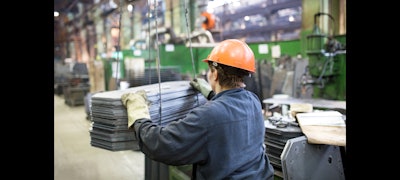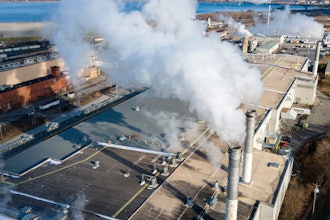
U.S. industrial production rose 0.3 percent in September. The rates of change for July and August were notably revised; the current estimate for July, a decrease of 0.1 percent, was 0.5 percentage points lower than previously reported, while the estimate for August, a decrease of 0.7 percent, was 0.2 percentage point higher than before. The estimates for manufacturing, mining, and utilities were each revised lower in July.
The continued effects of Hurricane Harvey and, to a lesser degree, the effects of Hurricane Irma combined to hold down the growth in total production in September by 1/4 percentage point. For the third quarter as a whole, industrial production fell 1.5 percent at an annual rate; excluding the effects of the hurricanes, the index would have risen at least 1/2 percent. Manufacturing output edged up 0.1 percent in September but fell 2.2 percent at an annual rate in the third quarter. The indexes for mining and utilities in September rose 0.4 percent and 1.5 percent, respectively. At 104.6 percent of its 2012 average, total industrial production in September was 1.6 percent above its year-earlier level. Capacity utilization for the industrial sector increased 0.2 percentage point in September to 76.0 percent, a rate that is 3.9 percentage points below its long-run (1972–2016) average.
Market Groups
The output of consumer goods moved up 0.5 percent in September, with gains for both durables and nondurables. The only major components of consumer goods to post losses were clothing, paper products, and consumer energy products. The output of business equipment rose 0.8 percent, as a decline of about 1 percent in transit equipment was outweighed by an increase in the industrial and other equipment category. Construction supplies and business supplies recorded gains of 1.9 percent and 0.6 percent, respectively. The production of materials declined 0.2 percent, a change that was more than accounted for by a drop of 7.2 percent in the index for chemical materials. The output of the chemical industry continued to be held down in the aftermath of Hurricane Harvey.
Industry Groups
Manufacturing output edged up 0.1 percent in September. A gain of 1.0 percent for durables outweighed a decrease of 0.9 percent for nondurables, and the output of other manufacturing (publishing and logging) was unchanged. Among durables, the largest increases—about 3 percent—were recorded by nonmetallic mineral products; machinery; and electrical equipment, appliances, and components. Among nondurables goods industries, declines were widespread, with the largest drop coming in the output of chemicals. Only the indexes for food, beverage, and tobacco products and for plastics and rubber products advanced.
In September, the rise of 0.4 percent for mining reflected a gain in oil and gas extraction; all of its other major components recorded losses. Over the past 12 months, mining output has increased 9.8 percent from its trough in September 2016.
Capacity utilization for manufacturing was unchanged at 75.1 percent in September, a rate that is 3.3 percentage points below its long-run average. Utilization for durables increased 0.7 percentage point to 74.9 percent, while the operating rate for nondurables fell 0.7 percentage point to 76.3 percent. The operating rate for mining edged up 0.1 percentage point to 83.5 percent, and the rate for utilities rose 1.1 percentage points to 74.8 percent.






















